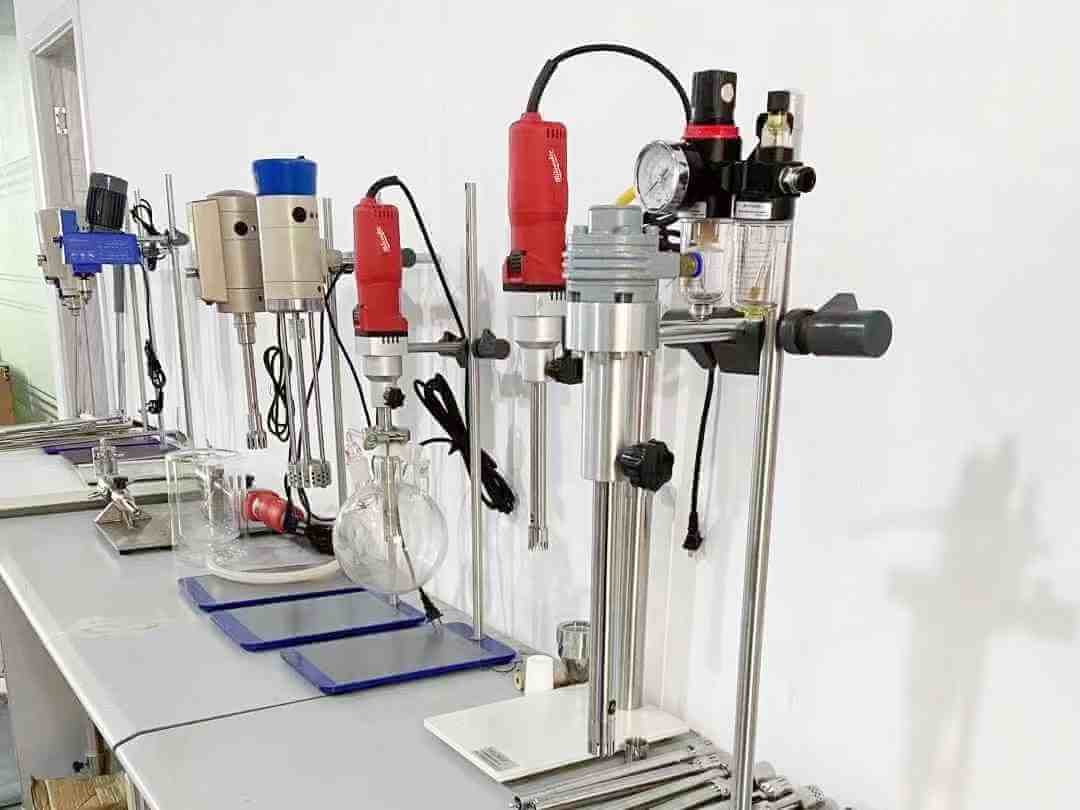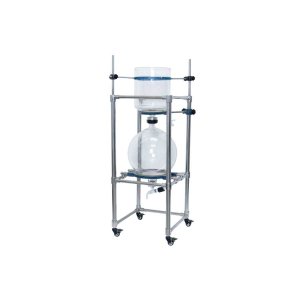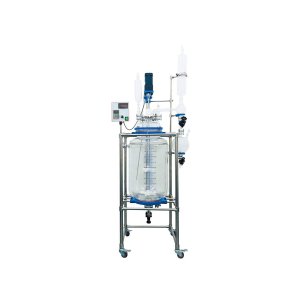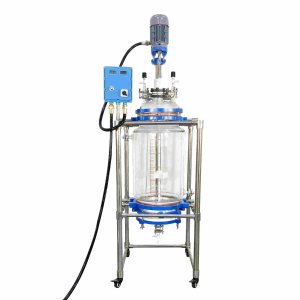The body of the three-layer glass reactor is composed of three layers of glass and two sets of interlayers, which can provide a stirring function and control the evaporation and reflux of the reaction solution. The inner jacket of the three-layer glass reactor is used for heating or cooling, the outer jacket is used for vacuuming, and the cooling or heating temperature of the materials in the kettle can be maintained as far as possible under the vacuum state of the outer jacket. The material is reacted in the chemical reactor, and after the reaction is completed, the material is discharged from the PTFE discharge port at the bottom of the kettle.
The working principle of the three-layer glass reactor
While stirring the material, the three-layer glass reactor injects a circulating hot solution or cooling liquid through the inner interlayer to heat or cool the material in the kettle at a constant temperature. When the material is heated and reacted, the evaporation efficiency can be improved under vacuum conditions (a vacuum device needs to be connected), and the solvent vapor is cooled into a liquid when it passes through the glass condensing coil (a cooling device needs to be connected), which can be refluxed into the kettle or through the reflux bend. The valve under the head is recovered. After the reaction is completed, the material can be discharged from the side discharge port at the bottom of the kettle.
Technical characteristics of a three-layer glass reactor
1. Variable frequency speed regulation, AC induction motor, constant speed, no brushes, no sparks, safe and stable, and can work continuously.
2. The whole set of glass instruments is produced by GG17 high borosilicate glass, which has good chemical and physical properties.
3. The glass interlayer interface is connected with hot oil and circulated, which can do heating reactions and cooling liquid can be used for low-temperature reactions.
4. It can be reached at room temperature, and the reflected heat can be quickly taken away by running tap water;
5. The lower discharge port has a flanged port and a PTFE valve, there is no dead angle in the container, and it can be disassembled to facilitate the discharge of solid materials.
6. Five-port reactor cover, extra-large port design is easy to clean, the standard port socket can choose to assemble reflux, distillation synthesis device.
7. The three-layer glass reactor is sealed with PTFE material and a special rubber compound sealing ring, which can resist various solvents and maintain a high vacuum degree.
8. The three-layer glass reactor adopts a condenser to ensure a high recovery rate.
9. The standardized connection method is convenient for disassembly.
10. The three-layer glass reactor is equipped with a discharge switch, and the recovery of the solvent is very fast.
11. Equipped with a vacuum gauge, you can choose the appropriate working vacuum degree for low boiling point materials.
12. The three-layer glass reactor is made of high-quality stainless steel, aluminum alloy, and new synthetic materials, which have the advantages of anti-corrosion, anti-rust, and various solvents.
13. The glass parts are made of high-temperature resistant borosilicate glass material, which has good physical and chemical properties.
14. The triple-layer glass design ensures the high vacuum degree of the experiment.
15. Electronic step-less speed regulation, no spark of motor, safe and reliable, long life.






